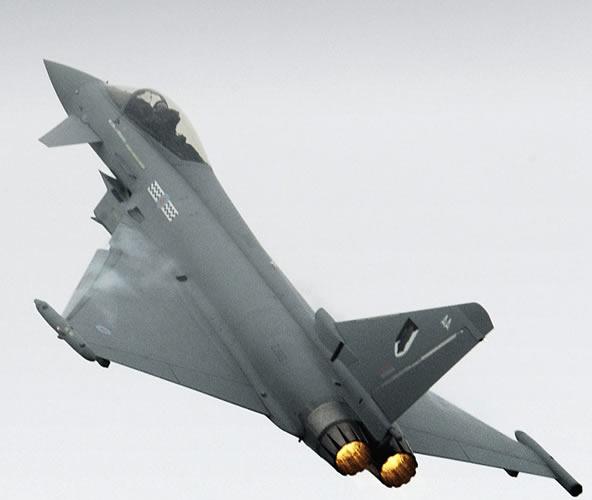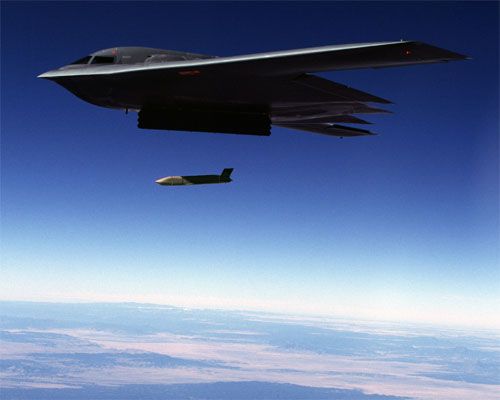Roudland Air Force
Contents
- 1 Roudland Air Force
- 2 Aircraft in Service
- 2.1 Typhoon
- 2.2 Typhoon 2ab ‘Hurricane’ Interim Aircraft
- 2.3 F-35 Lightning II
- 2.4 EA-35 Thunderclap
- 2.5 A-10 Thunderbolt
- 2.6 B-2 ‘Spirit’
- 2.7 KC-10 Extender
- 2.8 C-130 Hercules Moderate Lift Cargo Plane
- 2.9 C-17 Globemaster Heavy Lift Cargo Plane
- 2.10 C-5 Galaxy Ultra Heavy Lift Cargo Plane
- 2.11 C2 ‘Colossus’ Extreme Lift Cargo Plane
Roudland Air Force
The Roudland Air Force (RAF-not to be confused with the Great Wrightland GWRAF) is the arm of the Roudland Military tasked with defending Roudland’s sovereign airspace, giving close air support and comms networking support to army units overseas, transporting elements of those armies and conducting patrols or airstrikes in enemy airspace, should the operation call for it. To do this, the RAF utilises a number of aircraft, ranging from strike aircraft and long-range bombers through to attack helicopters, comms hub airplanes, electronic warfare jets and large capacity transport planes.
Ironically, the Air Force, although looked upon as a fully separate arm of the military, is actually subservient to the Navy, in that the Naval Air Arm is in fact Air Force planes and pilots who are assigned to carriers and other warships. The advantage of this is that the Air Force can conduct operations in tune with the Navy and Army with absolute support, and can always be sure that they have sufficient sea-transport support from the Navy.
The Air Force does not transport the Army or Navy from place to place under normal circumstances. It should be noted that the troop transport role is fulfilled by the Army Air Corps and the Naval Air Arm, and that in combat operations the Air Force is required to provide air superiority, troop and naval support and communications maintenance. It has its own transport fleet, but this is usually occupied with the tasks of moving Air Force personnel and equipment around either Roudland or other friendly countries, or setting up and supporting air bases in an operational theatre.
The Air Force effectively has its aircraft split into three roles: Fighter/Bomber craft used for troop support or air superiority, Transport and Logistics craft used to supply/support operations, and Communications/ Electronics Support craft used to create and sustain communications superiority over enemy forces.
Aircraft in Service
Typhoon
The Typhoon is an advanced air-to-air superiority fighter employed by the RAF in a frontline role to control enemy skies. Utilising a canard-delta design, and two high-powered Rolls Royce engines, the Typhoon and its pilot can intercept other planes at high altitude and long range, safe from enemy radar due to its stealth features. It is not entirely invisible to radar, but has a greatly reduced profile. The Typhoon was brought into service in 2003, and has seen service in every conflict since, performing with distinction in each one. It has a limited air-to-ground capability, but its main strength lies with its anti-fighter capability, and with its various missile loadouts.
Crew: 1 Pilot
Speed: Mach 2.9
Weapons: 27mm ‘Punisher’ Gatling Cannon, ASRAAM, AMRAAM, Brimstone, MBDA Meteor, HARM, Storm Shadow Cruise Missile.
Typhoon 2ab ‘Hurricane’ Interim Aircraft
Designed to fill the need for a fighter-bomber aircraft that the Roudland and Kegmenistani Armies lacked in 2003, the Hurricane is an up-armed version of the Typhoon with VTOL functionality and far less stealth capability. The two-seat aircraft were launched in the Hannigan Island crisis and the Southern Gulf War, and performed well. In the Roudland Navy they currently take a back-seat to the newer F-35, and they have been altogether replaced by the F-35 in the RAF.
Crew: 2 Pilots
Speed: Mach 1.9
Weapons: 27mm ‘Punisher’ Gatling Cannon, ASRAAM, Brimstone, Paveway Bomb, Hellfire, Dante
F-35 Lightning II
The Lightning II is an all-weather attack fighter-bomber that is designed for multi-role, multi-arm usage. With a stealth capacity less than, but similar to, the Typhoon, the F-35 can cruise at medium altitude whilst engaging enemy fighters and other aircraft, before dropping to a lower altitude to deploy its ground-attack munitions. It has VTOL capability, and is the primary attack aircraft of the Roudland Navy. It was brought into service in 2005, to replace the venerable Harrier jump-jets, most of which were exported to Gothria and Great Wrightland.
Crew: 1 Pilot
Speed: Mach 2.4
Weapons: 27mm ‘Punisher’ Gatling Cannon, ASRAAM, AMRAAM, Brimstone, Storm Shadow, MGA-56 Cluster Munitions, GBU-39 Small Diameter Bomb, Paveway Bomb
EA-35 Thunderclap
The EA-35 is a development of the F-35 designed to give electronics support to ground troops by running radar and electronic interference against enemy forces. Utilising ‘Jamming Pods’ and ECMs/ ECCMs, the EA-35 can make communications and control near-impossible for the enemy in a moderate area, whilst warding against any such attacks from the enemy on friendly communications systems.
Crew: 1 Pilot, 3 ECM Crew
Speed: Mach 2
Weapons: ASRAAM, HARM
A-10 Thunderbolt
The A-10 Thunderbolt is a powerful ground-attack fighter-bomber, designed to compliment and replace the T2ab Hurricane Bomber and to aid ground forces when encountering heavy resistance, usually in the form of armoured vehicles or fortifications. It has very stable flight at low altitudes and can be launched from short runways due to its wide, straight wings. The A-10 is a very hardy plane, with a frame that can survive direct hits from 25mm Armour Piercing projectiles (This was tested for real during the Southern Gulf War, when one A-10 was strafed by four rounds of 25mm AP. The A-10 got back to base without crashing), and a cockpit that has withstood AP strikes also due to a strong Titanium design. The A-10 has proved itself numerous times in combat, typically swooping low to drop missiles on a target, then swinging round for a second attack run with its twin 30mm Auto Cannons.
Crew: 2
Armament: 2 30mm ‘Avenger’ Gatling Guns, (up to) 8 SDB Bombs, (up to) 10 Dante Incendiary Missiles, (up to) 8 Brimstone Armour Killer Missiles, 2 Storm Shadow Cruise Missiles,
Speed: Cruises at 400mph, Combat Engagements at 200mph or lower
B-2 ‘Spirit’
The B-2 Stealth Bomber is the only dedicated bomber in the RAF, and as such takes the burden of any bombing operations. With a ‘total stealth’ capacity, the B-2 is invisible to radar until such time that it chooses to open its bomb bay doors. Able to carry many variations of munitions, and with an extreme-long range capacity, the B-2 is a vital new addition to the RAF, and is already a favourite of the pilots that fly her. The fleet of Spirits give Roudland an unrivalled long-range avionic strike capability, as they can fly for over 8,000 miles without refuelling.
Crew: 2
Speed: Mach 1.1
Weapons: Storm Shadow Cruise Missile, 500lb Bombs, 750lb Bombs, 2000lb Bunker-Buster/ Anti-Runway Bombs, MGA-56 Cluster Munitions, GBU-39 Small Diameter Bomb, GBU-28 Bunker Buster Bombs, AGM-129 ‘Checkmate’ Tactical Nuclear Cruise Missile
KC-10 Extender
The KC-10 serves to refuel aircraft for long-range missions whilst in the air. It has several nozzles that trail from the plane that enable all RAF craft to be refuelled. It can also be used to a limited extent to refuel Army Air Corps dropships. The KC-10 is located at Roudland air bases all over the globe, enabling it to be used to extend ranges many, many times beyond normal.
Crew: 6
Speed: 619mph
C-130 Hercules Moderate Lift Cargo Plane
The Hercules is used to transport moderate amounts of men and equipment to places just behind a frontline, where a runway may not have been constructed yet. It can land on virtually any surface, and forms a useful role as a sort of ‘troop taxi’ during a conflict. Variants include a ‘Spectre’ gunship version for air support operations, and the ‘Crossbow’ command plane that includes Archer Communications Network equipment.
Armament- (C-130) 2 Rear Mounted GPMGs, (Spectre) 2 M2, 4 L7 and 3 Miniguns
Crew- 4 or 6
Capacity- (C-130) 64 troops with some small cargo, (Crossbow) 25 staff plus equipment
C-17 Globemaster Heavy Lift Cargo Plane
With similar applications to the C-130, the C-17 is used as an unarmed delivery platform for long-range deployments of light infantry. It can house a number of troops, supplies, artillery places and jeeps, and travels at a speed that makes cross-continental deployments painless for logistics. A number of airborne divisions are permanently on standby for deployment with these large aircraft.
Crew- 4
Capacity- 102 troops with small cargo, or up to 4 WOLF jeeps with infantry
C-5 Galaxy Ultra Heavy Lift Cargo Plane
The C-5 is a major joint development with the Kegmenistani Airborne Corps to create an extremely heavy lift aircraft capable of landing and entire Mechanised regiment along with their IFVs. Utilising cutting edge jet technology that powers the craft, the C-5 is capable of tasks that were not thought possible before. It can carry three Main Battle Tanks, six IFVs or 8 WOLF jeeps at any one time.
Crew- 7
Capacity- 80 troops plus aforementioned cargo or 200 troops
C2 ‘Colossus’ Extreme Lift Cargo Plane
The C2 Colossus is another product of the continued Roudland-Kegmenistani cooperation over military affairs. It is approximately 25% bigger than the C-5, and has been built in limited numbers. One Kegmenistani project leader, named Anya Kuznetsov simply remarked ‘we built it because we wanted to know if we could’. It is unrivalled in its cargo space and troop/vehicle carrying capacity, with the ability to carry a fleet of ten IFVs, 5 MBTs or fifteen WOLF jeeps, as well as 300 troops and equipment.
Crew: 10
Capacity: 100 troops plus cargo load of vehicles or 300 troops.






